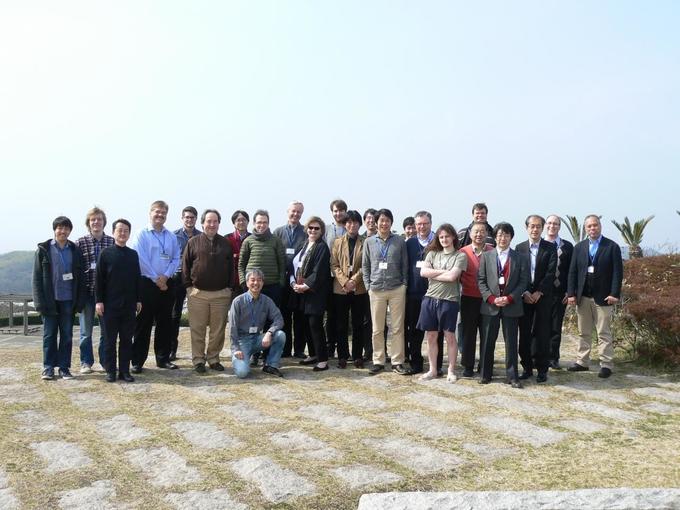NO.060 Systems Resilience – Bridging the Gap Between Social and Mathematical
February 23 - 26, 2015 (Check-in: February 22, 2015 )
Organizers
- Hiroshi Maruyama
- The Institute of Statistical Mathematics, Japan
- Güenter Müller
- University of Freiburg, Germany
- Kazuo Furuta
- The University of Tokyo, Japan

Overview
Description of the meeting
The goal of this meeting is to bridge the gap between the “social“ and “mathematical” camps of resilience research so that the social aspects of resilience are more appropriately incorporated into the mathematical models and at the same time the mathematical models can provide practical guidance to the design, policy making, and operations of real-world societal systems.
Resilience is said to be an ability of a system to absorb and recover from perturbations. It is considered to be a critical characteristic for a system to survive, especially for social systems like organizations, communities, cities, and our civilization as a whole. Resilience has been studied in many different domains, such as psychology, biology, ecology, engineering, and social sciences, but often their approaches are widely different. We observe that there are at least two seemingly incongruent approaches ? social and mathematical.
The social camp, mainly dealing with problems such as socio-ecological resilience and urban resilience, is concerned with resilience as a social norm. Their research approaches are based on case studies, best practices, processes, communication, decision making, consensus building, and other disciplines, and little mathematical models are used except for relatively simple system dynamics to compare different scenarios. Policy makers can learn from these studies to make better decisions in face of possible disruptions. However, these approaches do not guarantee nor give quantitative assurance to how much the resilience strategies can contribute to the survivability of the system.
The mathematical camp, on the other hand, is interested in the mechanisms of how systems can collapse and in what conditions resilience strategies work for recovery. The well-known Bak-Tang-Wiesenfeld “sandpile” model [1] and the study on early-warning signals by Scheffer, et al. [2], as well as the SR-Model [3] built by the Systems Resilience project of ROIS, are good examples of mathematical approaches to resilience. They use abstract mathematical models to describe the internal workings of a system, and thus, we can draw logical conclusions in what conditions catastrophe can occur (at least probabilistically) and what strategies are effective to make the system resilient. However, their interests are often limited to the abstract models, and the results of these studies are rarely applied to real-world problems. Also these mathematical models are usually not capable of the adaptation (or “innovation”) aspect of resilience, meaning that the system will evolve to something new after the shock.
The goal of this meeting is to bring researchers in those two camps and to explore common grounds so that the social and mathematical approaches are integrated to make objective and practical resilience strategies. In order to make our discussions focused, we will first define a layered domains, with the real world at the bottom, Cyber-Physical Systems (CPS) as the second layer, and cyber security at the top. In this process of layered abstraction, we keep the essential aspects of socio-technical systems, including human behaviors, social and economic factors, and technical and systems workings intact so that the microcosm at the top still retains similar (albeit not the same) characteristics of the real world. Then, we will discuss how the case studies, best practices, human factors, etc. are interconnected to selected mathematical models using this narrowed domain. As an outcome of this meeting, we expect to have a joint view on resilience, which is an amalgamation of both social and mathematical approaches.
We shall invite participants from diverse disciplines. Resilience domain in itself is multidisciplinary (relating to several disciplines) and transdisciplinary (using approaches that transcend specialization boundaries). Secondly, these academicians have shown significant interest and contributions to advancing resilience thinking as they have demonstrated in international meetings that our team members also attended. We shall also invite PhD candidates who have demonstrated in our previous meetings critical thinking and research communication skills. Hence, we believe that we can leverage this diversity of participants to achieving the goals we have set for this workshop.
References
[1]. P. Bak (1996). How Nature Works: The Science of Self-Organized Criticality, New York: Copernicus.
[2]. M. Scheffer, J. Bascompte, W.A. Brock, et al. (2009). Early-warning signals for critical transitions, Nature 461:3, pp. 53-59.
[3]. N. Schwind, T. Okimoto, K. Inoue, et al. (2013). Systems Resilience: a challenge problem for dynamic constraint-based agent systems. In Proceedings of the 12th International Conference on Autonomous Agents and Multiagent Systems (AAMAS).
